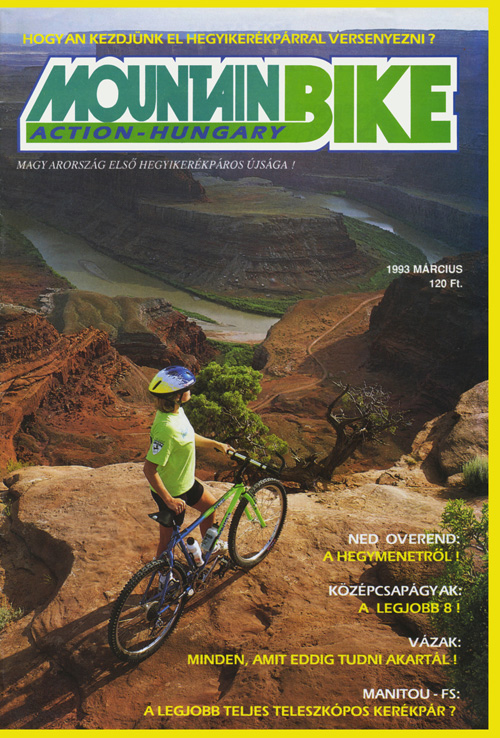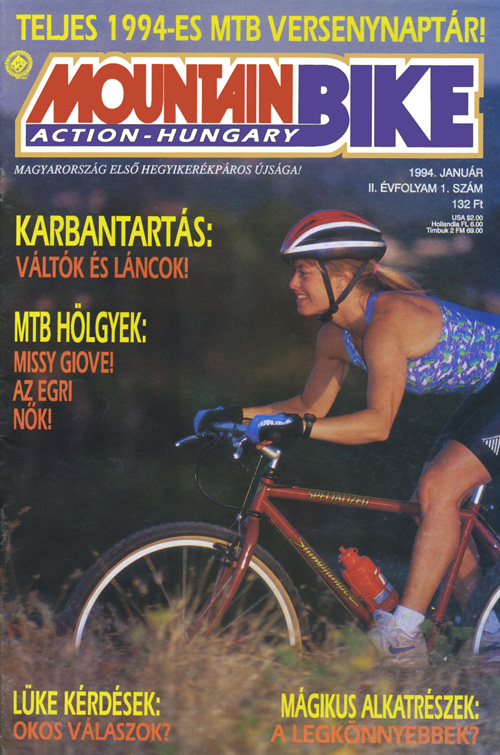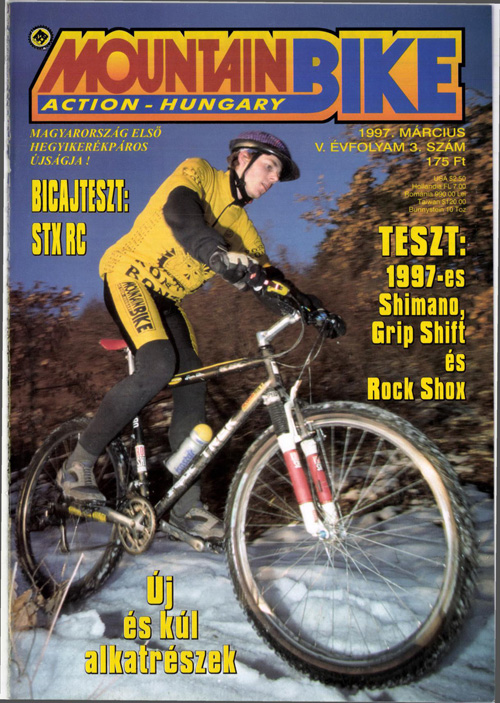English
Dave’s Way – MBAH, March 2023
I was excited when Simon contacted me about his project to take copies of MBAH and scan them and put them on a website. In the 7 years of publication, MBAH documented that point and period in Hungarian mountain biking that saw great growth, and the development of the culture, sport and business.
It is hard to believe that it has been 30 years since that time, but I am glad that mountain bikers in Hungary still are interested in their history and what happened in that period. Looking through the site, it brings back many wonderful memories. I miss riding in Hungary, the forests near Eger, Csilleberc in Budapest and the many courses of the OB races. I hope to get back to Hungary and ride there in the near future.
Hopefully, the access that this site will give Hungarians to this exciting period in the history of the sport and culture, will excite and inspire young mountain bikers in Hungary to develop and evolve the culture and sport of mountain biking in the future.
MBAH would not have happened without the hard work of many people throughout the years it was published; including the writers, editors and others who are listed in the Impressum of the magazine. I hope they also feel as positive as I do about the historical record that MBAH has now become.
I would like to give special thanks to Simon and the volunteers who made this site possible, and to the genius of the great Zsolt Laczko who created the website, database and back-end that make this all work.
My wish for all of you reading this, is that today the weather will be good, your tires will be full of air, and you will have a great ride on your local trails!
Cheers to MBAH!
Exactly 30 years ago, based on Dave Erickson’s concept, Mountain Bike Action Hungary magazine, MBAH, was published for the first time in March 1993. Hungarian readers often abbreviated the magazines’ name as ’ekshon’ . The last issue saw the newsstands in August 1999 and Dave was in the chair for another 4 months as editor of BikeMag, the magazine following up on MBAH’s heritage.
In the seven years between ’93 and ’99, incredible changes took place in the MTB scene, really it was the golden age! Grundig World Cups, carbon and titanium marvels sold at astronomical prices, the charm of experimentation, Western high-tech, freedom and the era of euphoric parties. In that period, many of us were teenagers and the high end bikes equipped with Grafton, Ringlé, Chris King, XTR, but in most of the cases even middle category LX-STX, were completely out of reach for the most of us.
Even before the first issue of MBAH came out, mountain biking scene in Hungary was already warming up, but with the support of the American Mountain Bike Action magazine (MBA), which has been in print since 1986, in 1993 Dave practically brought water to the desert: for the new issues to come out readers waited like messiahs, we were able to cite many articles by heart and it is no surprise that those who nowadays would like to get their hands on MBAH magazines will most likely miss the middle poster: they were prime decorations on our walls. Fat Chance, GT, Trek, Yeti… the list can be continued if you click on the ’Posters’ subpage link.
RTS, FRS, Smoke-Dart, OCLV, Cunningham, VVA, Repack, Easton, Reynolds, Tange cro-mo …. when retro mtb people talk for outsiders it may sound as something like a Cro-Magnon language. And these professional conversations are often ended only by our children saying ‘Dad, you promised you were going to talk bikes for 10 minutes‘.
Admins of the bike part trading groups are also under heavy load, the Hungarian River Danube may be blocked by the piles of vintage parts which are on offer. ’Do you split?’ The question is often asked when you only need a frame or a BB 🙂
In 2023 MBAH celebrates its 30th anniversary, and among other things they anticipated, was the elements of adapting to climate emergency with cycling mobility. Today we have everything on our hands to ‘reinvent’ the wheel so that we can pedal ourselves into a sustainable 21st century with cities where the air is healthy to breath!
Mountain bikes were designed and built in many countries, but the sport really took off in Marin County, California in the end of the ’70s. An increasing number of people were bombing down from Mount Tam on their modified old Schwinn bikes, often overcoming fear of death, hoping for small gifts typical of the hippie era, but first and foremost with a deep desire for competition, fun and freedom. The klunker bikes were constantly shaped and developed, when Joe Breeze made the first batch of his 10 mountain bikes, specifically designed for off-road use – two of them are now on display in the Smithsonian in DC and the Marin Museum of Bicycling in Fairfax, CA.
MBAH brought this milieu, knowledge and feeling to Hungary, and for this eternal gratitude goes to Dave and the team!
With the help of volunteers, this page will contain all of the MBAH issues in scanned format as well as plain text. From time to time, names of volunteers will be added here, so far thank you Mihaly Szerecsen.
Happy Trails for the vintage rider in helmet!
Simon Parais
Budapest, 2-23-2023
How does MBAH fit into the history of Hungarian cycling?
I can only write from a biased and personal point of view about the birth of the Hungarian MTB sport and the history of the MBAH as I know it, which is obviously completely different from the way others experienced those years. Around ’93, I took mountain bike racing more seriously – partly out of necessity, because I couldn’t compete in the road discipline due to a transfer dispute (specifically, FTC tried to make it impossible for me – they succeeded). I was very grateful to the MTB community, and to the competition system that was developing at the time with extreme speed, for giving meaning to the sport. This worked out so well that I quickly realized that more people were interested in me in the forest than when I’m on a road bike – even though I was already a two-time Hungarian champion and an Olympian.
The MBAH added a lot to my “popularity” at the time, putting me on the front page several times (mostly with the Grundig World Cup photos), and I also often appeared in articles. Thanks to this period – indirectly to the MBAH and to the interests around the sport developed through it – I also got a regular sponsorship contract. From 1997, Red Bull thought that their blue jersey looked good on me. It was a very cool thing also at that time! Even if only in a relatively small circle, I could feel like a star. This is what the MBAH brought me.
The mtb people laughed at me for a long time: “Here’s this clumsy road guy, complete lame when on downhill…” During the races, a special squad of fans stood by the slopes shouting: “Take risk!” Later on I learned how to go downhill and became a three-time XC champion in ’95, ’96 and ’97.
It was good to read the reports of the competitions, also through subjective lens. The technical issues made me less excited, at that time I was not very interested in the bike as a technical device – I was more fascinated by training and heart rate measurement. Of course, I speak easily, because either as a sponsor of MALI or later of the NELLA bicycle shop, I always received the coolest technology available at the time. It wasn’t for the bikes that I didn’t become a more efficient rider.
I have a lot wonderful memories from my sports past, which is almost twenty years including the junior age groups, but among the photos that are dearest to me are two MBAH front pages and an internal “poster”, which remind me of the defining years of my life. A special thanks goes to Dave Erickson for the enormously important work, the value of which we perhaps did not realize back at the time, for that he brought the Grundig World Cup to Hungary and the world’s elite came three times to Budapest, Csillebérc.
Thank you Dave for this experience!
Károly Eisenkrammer – Director, Tour de Hongrie
2023







